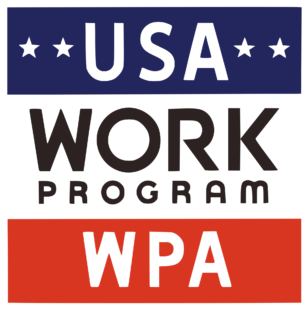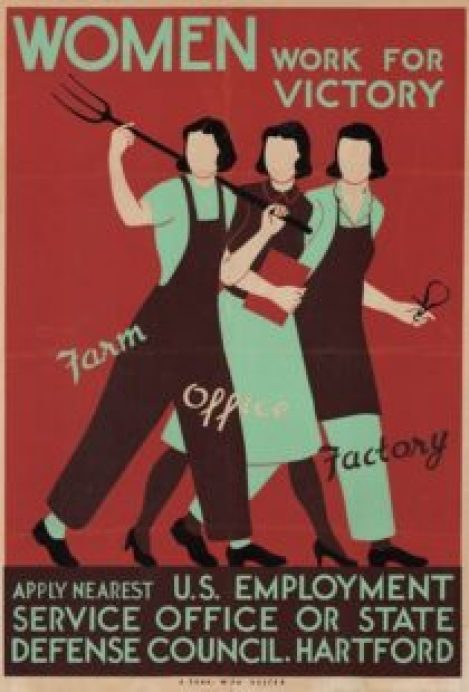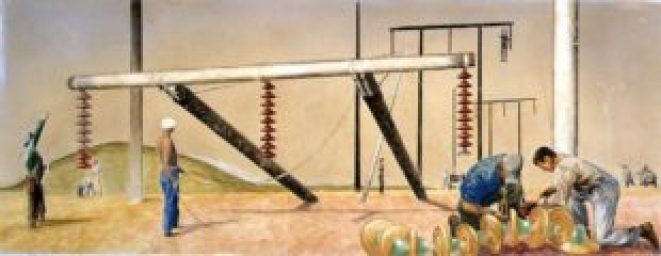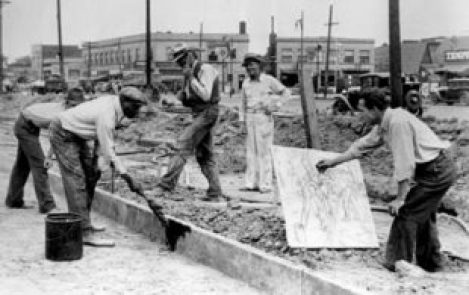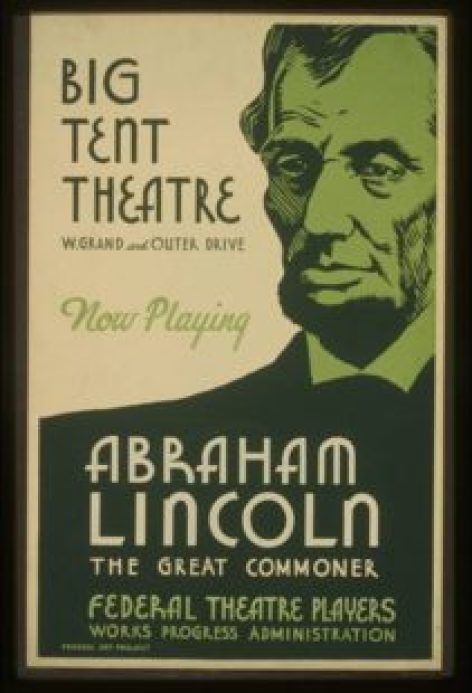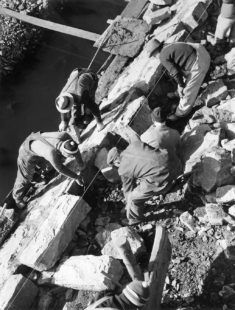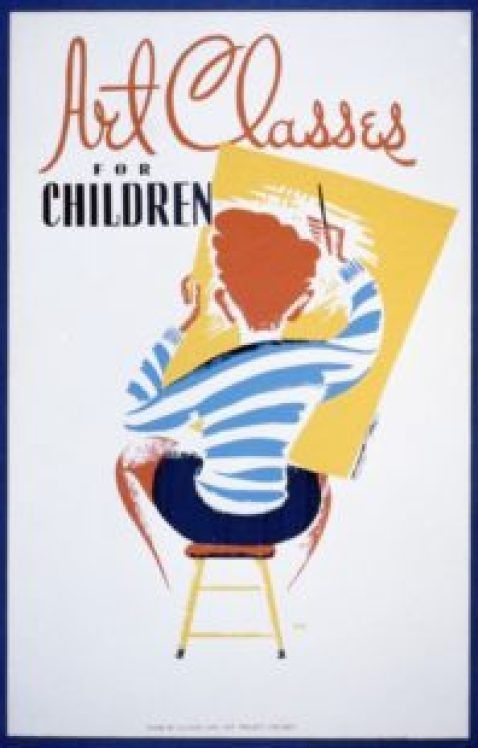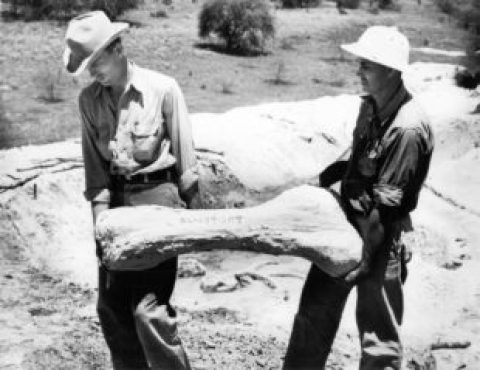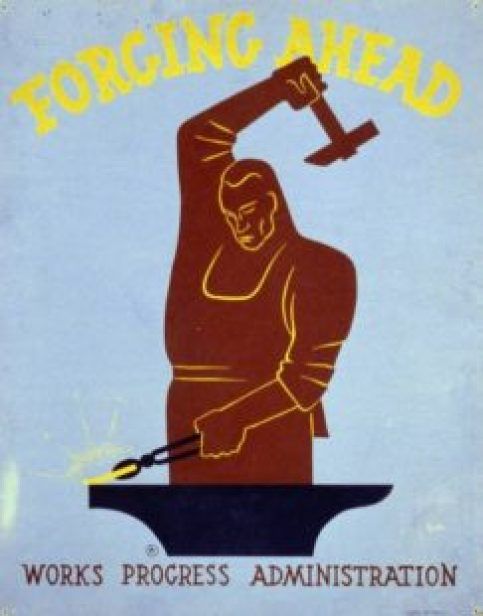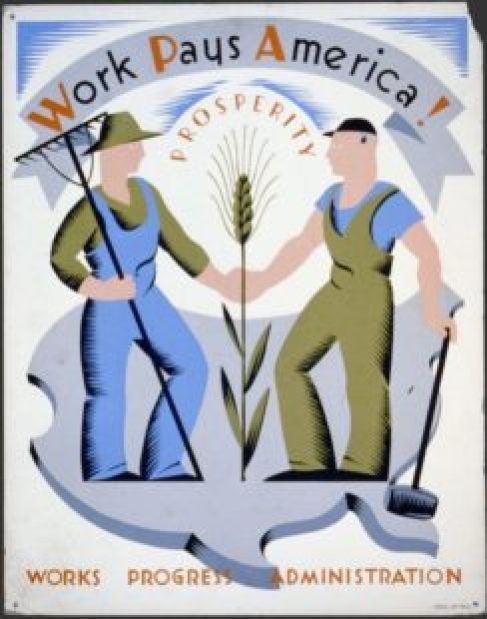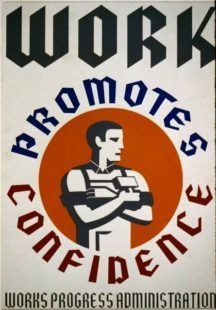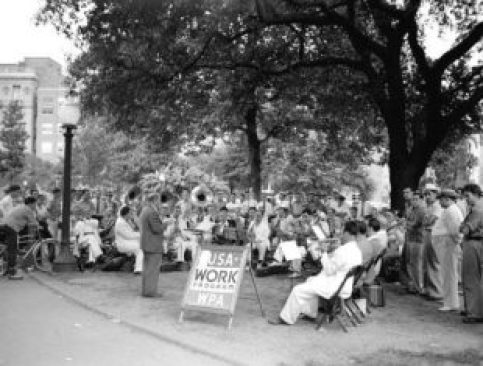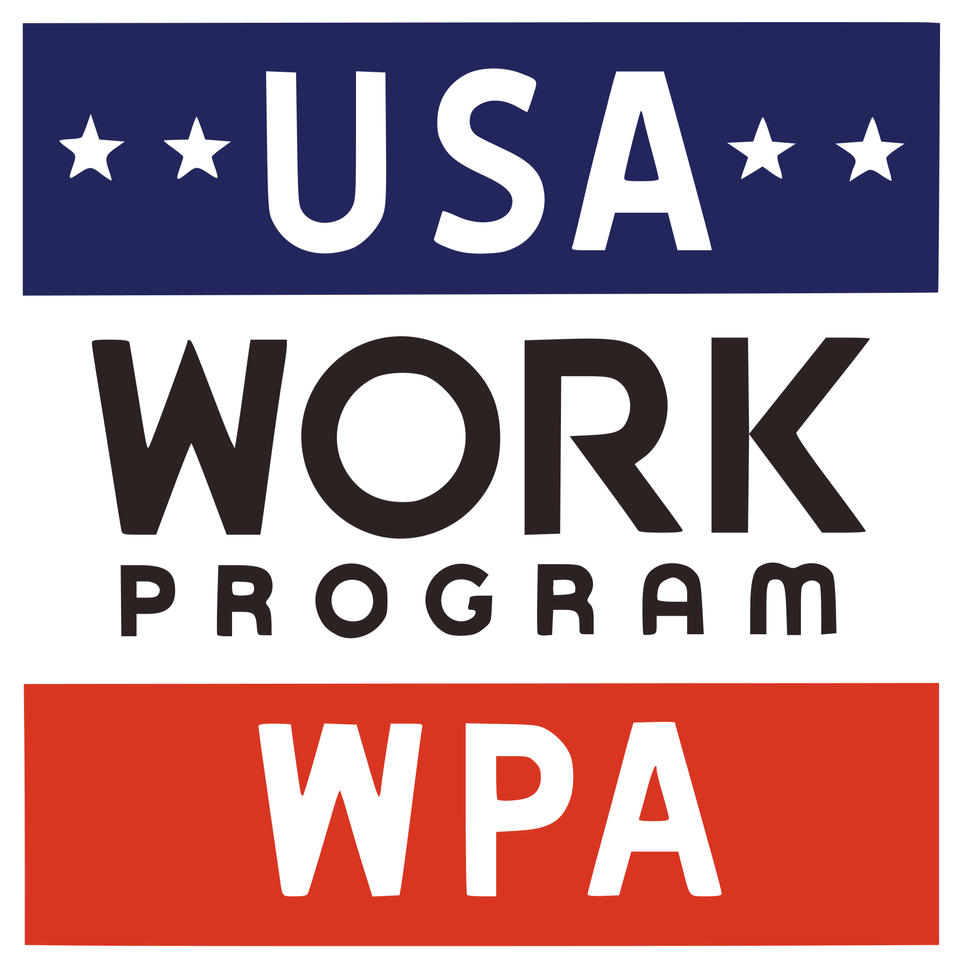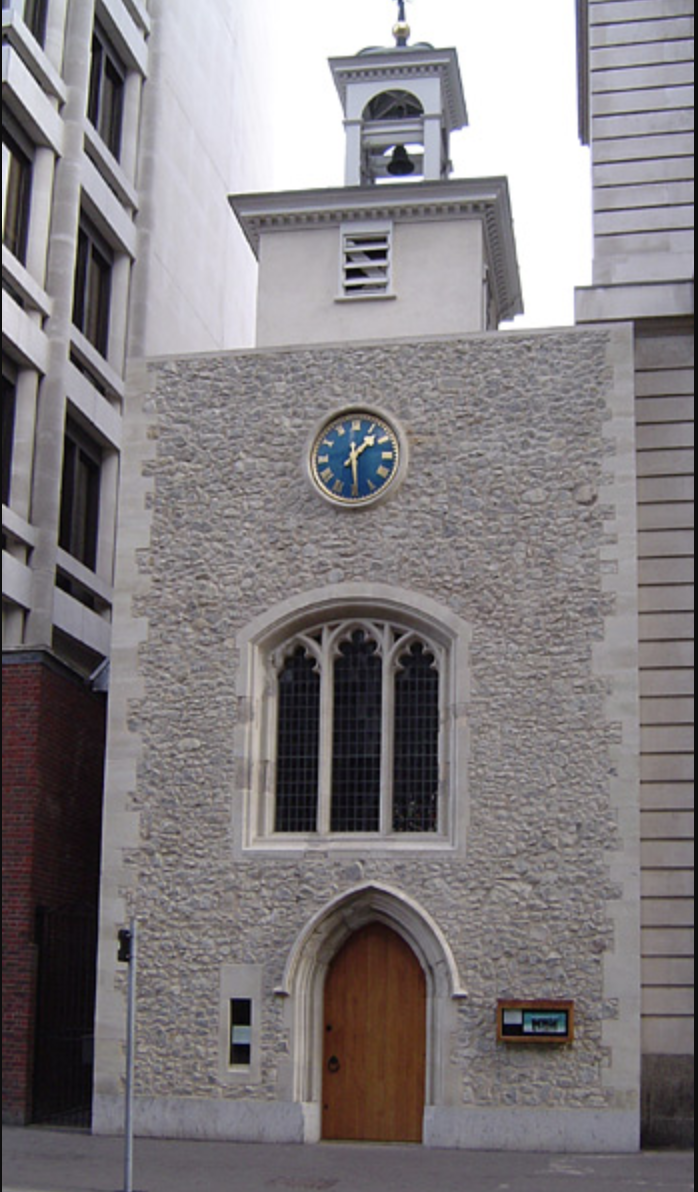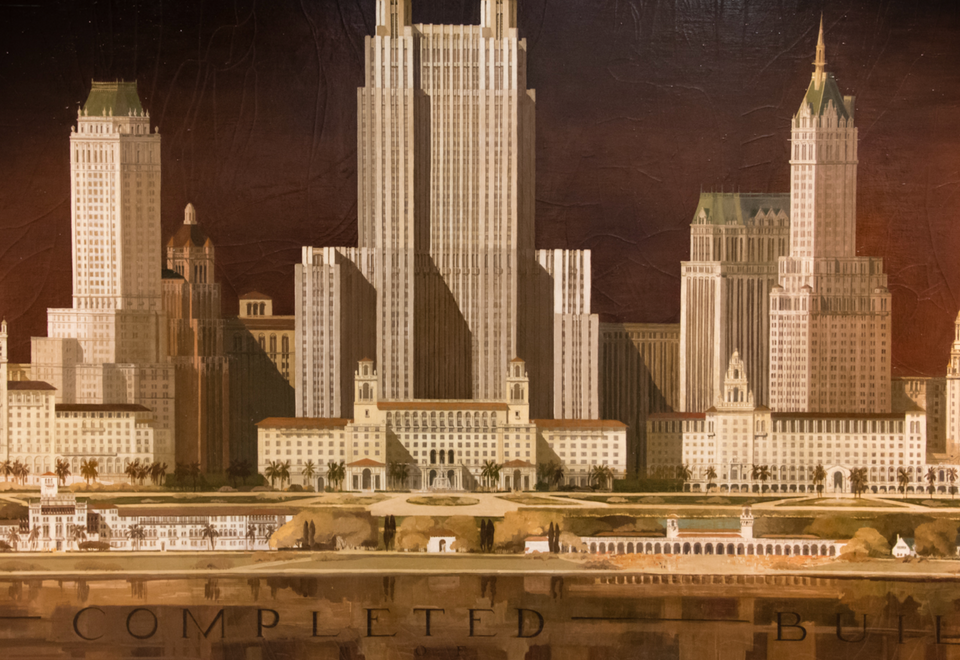The Works Progress Administration (WPA) was a New Deal initiative launched in 1935, in the heart of the Great Depression, to combat widespread unemployment and raise national morale, and which, over the course of eight years, employed over 8 million Americans who built roads, dams, sewers, and bridges, and other infrastructure; who designed buildings; who maintained and improved National Parks; who played music and performed plays; who taught children how to read and paint; and who made murals, posters, and other art depicting the American experience and propagating the value of work.
And yet this list barely touches on the scope of the WPA’s impact on American life and culture. To celebrate its legacy, we’re presenting some images of the design and painting the WPA commissioned, along with a few photographs of people carrying out WPA projects in the field. In addition to what’s included here, we encourage you to click here for a catalog of (some of) the architectural riches resulting from the WPA that remain with us.
Happy Labor Day!
